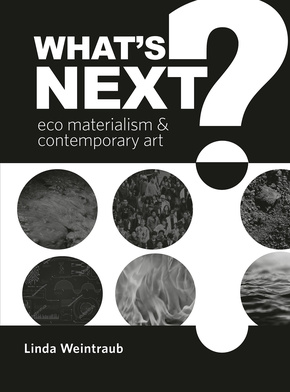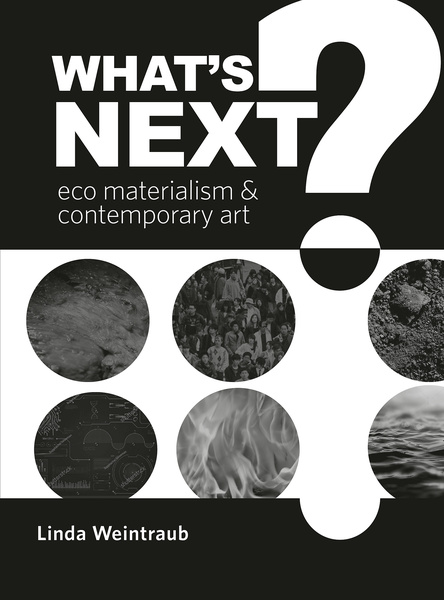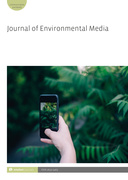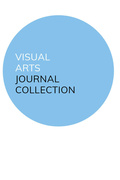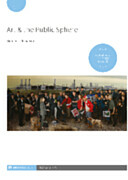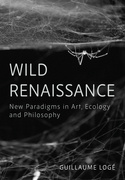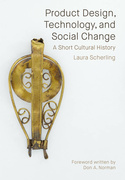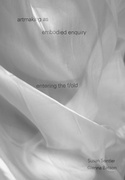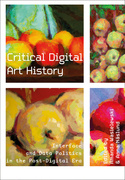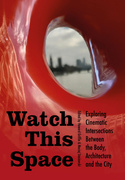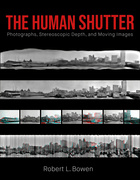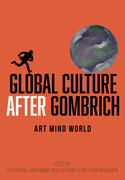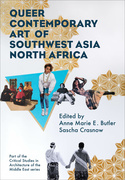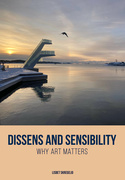What's Next? (Book)
Eco Materialism and Contemporary Art
By paying tribute to matter, materiality and materialisation, the examples of contemporary art assembled in What’s Next? Eco Materialism and Contemporary Art challenge the social, cultural and ethical norms that prevailed in the twentieth century. This significant frontier of contemporary culture is identified as Eco Materialism because it affirms the emergent philosophy of Neo Materialism and attends to the pragmatic urgency of environmentalism.
Any licensing requests to reuse the content can be made through Intellect books webpage.
Edition
By paying tribute to matter, materiality and materialisation, the examples of contemporary art assembled in What’s Next? Eco Materialism and Contemporary Art challenge the social, cultural and ethical norms that prevailed in the twentieth century. This significant frontier of contemporary culture is identified as Eco Materialism because it affirms the emergent philosophy of Neo Materialism and attends to the pragmatic urgency of environmentalism.
In this highly original book, Linda Weintraub surveys the work of 40 international artists who present materiality as a strategy to convert society’s environmental neglect into responsible stewardship. These bold art initiatives, enriched by their associations with philosophy, ecology and cultural critique, bear the hallmark of a significant new art movement. This accessible text, written for students and a wider readership, is augmented with interactive opportunities that actuate eco material attitudes and behaviours. They invite readers to engage in this timely arena of contemporary art.
Printed in high quality black and white throughout, colour reproductions of the artworks discussed are available to view through the author's website.
Linda Weintraub is a curator, educator, artist, and author of several popular books about contemporary art. She has earned her reputation by making the outposts of vanguard art accessible to broad audiences. Weintraub’s books exploring contemporary art and ecology include What’s Next? Eco Materialism & Contemporary Art (2018), To LIFE! Eco Art in Pursuit of a Sustainable Planet (2012), and Avant-Guardians (2007), a series of textlets that include EcoCentric Topics: Pioneering Themes for Eco-Art; Cycle-Logical Art: Recycling Matters for Eco-Art; EnvironMentalities: Twenty-two Approaches to Eco-Art. Weintraub applies environmental concerns to her personal life by managing a sustainable homestead where she practices permaculture. She is also the author of In the Making: Creative Options for Contemporary Artistsand Art on the Edge and Over: Searching for Art’s Meaning in Contemporary Society. She served as the director of the Edith C. Blum Art Institute located on the Bard College campus where she toured many of the fifty exhibitions she curated, and published over twenty catalogues. Weintraub was the Henry Luce Professor of Emerging Arts at Oberlin College; and currently teaches in the Nomad9 MFA program at the University of Hartford.
PREFACE: How Materiality Shaped This Book
INTRODUCTION: Where to Begin?
ECO MATERIAL ALLURES & REPULSIONS
Fingernails – Tim Hawkinson
Blood – Marc Quinn
Placentas – Gu Wenda
Sweat Caitlin – Pautler Albritton
Tears – Rose-Lynn Fisher
Ear Wax – Amanda Cotton
Breast Milk – Jess Dobkin
Fat – Sun Yuan and Peng Yu
Spit – Spurse
Hair – Germaine Koh
Feces – Terence Koh
Corpse – Maurizio Montalti
Reader Interaction
ARCHETYPES OF MATERIAL USE & DISUSE
Pet Archetype – Amy M. Youngs
Sacred Archetype – Walter De Maria
Hazard Archetype – Hilda Hellström
Specimen Archetype – Alexandra Regan Toland
Resource Archetype – Jon Cohrs
Aesthetic Archetype – Laura Parker
Merchandise Archetype – Joe Scanlan
Reader Interaction
ECO MATERIAL OPERATIVES
Do-It-Without-People – James Bridle
Do-It-Yourself – Thomas Thwaites
Do-It-As-Community – Mary Mattingly
Do-It-As-Troop – Francis Alÿs
Do-It-With-Site – Rachael Mellors
Reader Interaction
ECO MATERIAL TOOLS
Fire Burns – Bruce Davies
Fire Melts Metals – Futurefarmers
Fire Sinters – Markus Kayser
Fire Cooks – Spurse
Reader Interaction
ECO MATERIAL CREATIVITY
Water Condenses – Simparch
Water Dissolves – Dove Bradshaw
Water Forms Freshwater – Biomes Pierre Huyghe
Water Provides Marine Habitats – Jason deCaires Taylor
Water Inspires Reverence – Red Earth
Reader Interaction
ECO MATERIAL TECHNOLOGY
E-Energy Consumption – Gebhard Sengmüller
E-Omnipresence – Germaine Koh
E-Waste – Raphael Perret
E-Systems – SEAD/Angelo Vermeulen
E-Memory – Alice Anderson
E-Prayer – Kal Spelletich
Reader Interaction
WHAT’S NEXT?
Option 1: Desperation Chim↑Pom
Option 2: Relocation Zbigniew Oksiuta
Option 3: Recuperation Natalie Jeremijenko
Reader Interaction
'A timely contribution, both to the burgeoning philosophical movement of new materialism, and to a renewed consideration of materiality in contemporary art-making practices, which since the 1960s have increasingly withdrawn from the material conventions of traditional media. What results from Weintraub’s efforts is a wide-ranging and fascinating [...] exploration of future-oriented artists experimenting at the vital intersections of philosophy, environmentalism, and art. [...] The sheer range of artists and eco material practices that Weintraub has assembled in What’s Next? is astonishing, and alone makes the volume a valuable addition to art and environmental humanities collections.'
'I just finished What's Next and wanted to [say] how much I loved the book. I am so impressed with [Weintraub’s] deep and extensive scholarship, and how [the author is] able to interweave scientific, poetic, and aesthetic strands into a fabric of thought that is clear and beautiful. The book is a real treasure and resource, which asks necessary questions and frames a way forward at a time of crisis. Thank you!'
‘Environmental responsibility, innovation and the re-discovery of the ‘wonder’ of life are key to ‘What’s Next?’. Linda’s passion speaks with clarity and directness about the environmental disregard of Consumer Materialism, and about an emerging philosophy New Materialism which she explains has a conscious relationship with all forms of matter, whether an acorn or pencil. New Materialism seeks for humans to regain a sensory and bodily relationship with the physicality of the planet connecting with its inherent materials and processes. Linda grounds the movement of Eco Materialism in these principles within the context of ecology and environmentalism, demonstrating it through the creative responses of the artists.
I have been working alone, isolated from other artists and I have felt rather alien to the ‘art world’. I was drawn to work with the earth but unaware I was part of a movement, I found my ways of working intuitively, tending the olive grove, making on the shoreline at sunrise, creativity embedded in life. I feel connection with the work of other artists in the book, particularly those with sensory and physical relationships with the raw materials of the earth. I resonate with the first chapter’s appreciation and inquiry into materials generated with our bodies, saliva is part of my clay sculptures. It is wonderful how through the chapters of the book Linda brings together our common reference point, taking us on a journey of creative and immersive explorations of the material environment of the planet. Her words beat an urgent call for change.'

